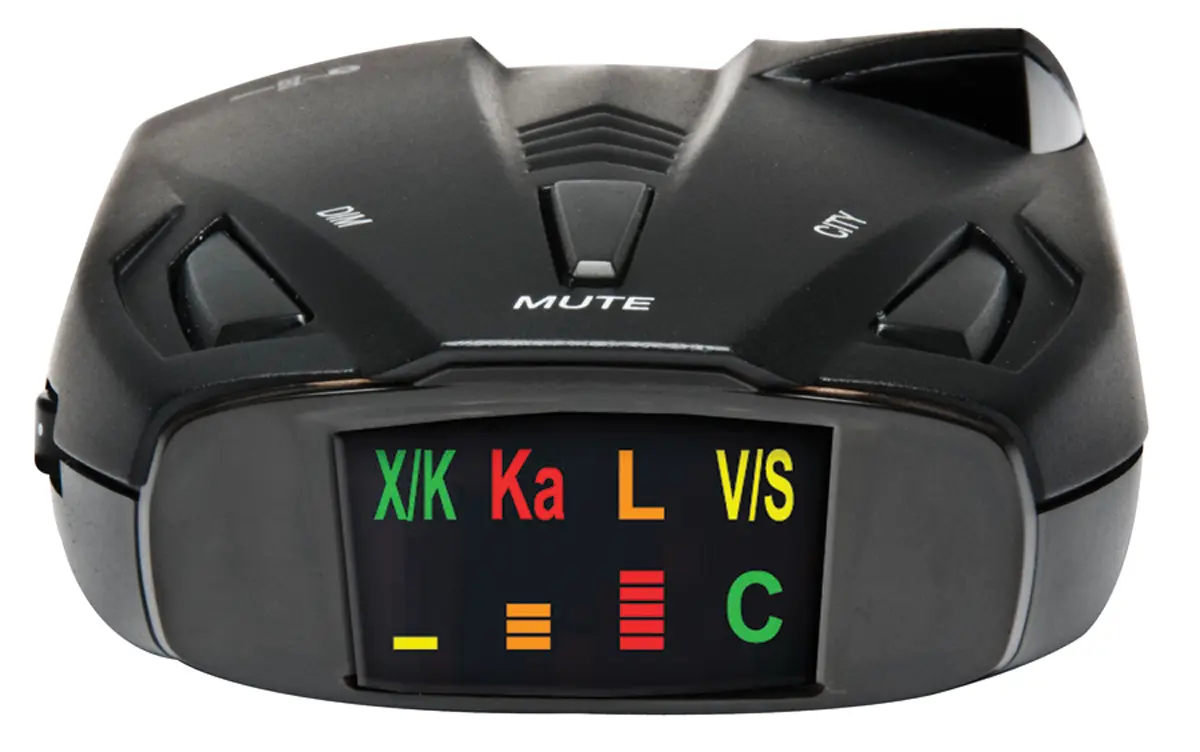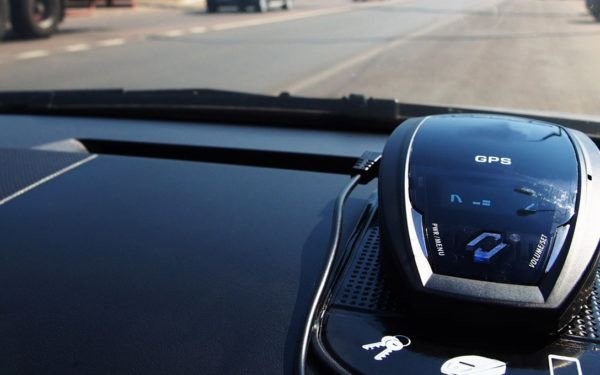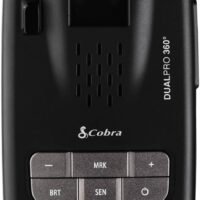The means to optimizing your radar detector is by learning how to properly read it. Reading a radar detector helps you avoid police radar guns, heavy traffic, bad and congested roads, and accidents. However, several car owners own radar detectors but read them inaccurately because of improper installation. So, how to read a radar detector for the best results? Keep reading to find out.
Reading a radar detector involves understanding the radar bands, intercepting signals, and responding to alerts. For an accurate reading of a radar detector, users need to tune their radar detector to the appropriate radar band. These are the numbers displayed on your radar detector. Police radar guns use the X, K, Ka bands. Tune your radar detector to intercept the correct band being used in your commune and pay attention to the display on your radar detector as it will indicate the presence of a police radar gun. If it displays any of the bands with an increasing network bar, then slow down as a radar gun is nearby. Distinguish between active radar bands and false alarm bands by knowing the exact bands being used by law enforcement. This helps you to better read your radar detector and avoid false alarms. Advanced radar detectors have audible alert systems that simplify the reading process.
For car owners to get an accurate reading of a radar detector, they familiarize themselves with how the radar and radar detector works, radar bands, how to intercept radars, and the proper way of mounting a radar detector.
Table of Contents
How Do Radar And Radar Detectors Work
Radars detect speed by bouncing signals off moving vehicles and using the change in the received signals to measure vehicle speed. This technique is called the doppler effect. The police simply point a radar gun in a direction and wait for a return signal.
The return signal is what determines if you’ll be stopped or not. Although, there have been lawsuits against police departments due to poorly calibrated radars producing wrong data.
Radars have developed over the years. To counter radar detectors, law enforcement moved towards Laser detection. This works by using laser-powered devices to bypass radar detectors mounted on vehicles to determine the speed of a vehicle.
However, unlike radar guns, lasers have a shorter range, thereby are only suitable for short-range use, which is not as effective as radar guns at catching overspeeding vehicles.
Notwithstanding, manufacturers created laser jammers to change the results that the police officer sees on his radar gun. However, laser jammers are illegal in some states, and countries of the world. It is imperative to acquaint yourself with the laws around radar and laser detectors before using them anywhere to avoid huge fines.
On the other hand, Radar Detectors work by detecting the signals emitted by police radars from a distance. A radar detector is equipped with a receiver antenna to pick up frequencies from specific radar bands. Some bands have up to 5 frequencies. A good radar detector should be able to pick up all the frequencies.
Radar detectors are mounted on the car windshield with a suction cup for optimal range. Although facing one direction, advanced radar detectors can pick up signals from all directions. This is called 360 protection.
Radar guns operate on different radar bands that are all available in advanced radar detections. These are the X, K, and Ka bands.
What Are Radar Bands
Radar bands are arguably the most important concept for reading a radar detector. Radars use several wavelength bands: X, K, Ka, and Ku. Advanced Radar detectors can detect signals from all three bands, thereby enhancing the functions of a single radar detector. Buying a radar detector with all bands saves you money and increases performance.
The most utilized bands in law enforcement are the X, K, and Ka-band. The Ka-band is considered the strongest and is the most advanced while the K band is the most popular amongst law enforcement and private owners. Because of its popularity, radar detectors often receive false alarms.
The Ka-band on the other hand is more restricted and majorly used by only law enforcement and the telecommunications industry. Its range is between 26.5- 40 GHz, which enables higher bandwidth.
The X-band is nearly obsolete but is still utilized in short-range radar guns. Its range is between 7.0-11.2 GHz. The X-band is also responsible for short bursts of false alarms. Most car owners are turning off the X-band but it is advised to leave your radar detector working at full capacity for optimal performance.
However, you can always narrow down your frequency search on the X-band to 10.5 GHz for radar guns.
Always make sure your radar detector is searching for frequencies on all the radar bands in the vicinity as it ensures an accurate and timely radar detector reading.
How To Intercept Radars Detector Alerts
While it is not recommended to ignore an X-band alert in some States, it is safe to ignore any alerts from this band. The X-band, though near obsolete, is a cheap option for private use. Law enforcement has long abandoned this band leaving only Ohio police radars with the band in the country. So, if you happen to find yourself driving within Ohio, it is recommended to leave your X-band on.
If you’re skeptical of completely turning off your X-band, then use the filtration option available in most advanced radar detectors to eliminate false alarms on the band.
The K-band on the other hand is still very much in use by law enforcement, however, new advanced cars emit frequencies on the K-band from their various advanced security systems and Blind Spot Monitoring.
This causes false alarms which can be filtered with proper reading. First, you need to identify the places with high K-band interference, although you’re more likely to get this sort of interference while driving. Next, use signal analysis available in advanced radar detectors to differentiate between the various frequencies. Doing so helps to intercept the signal before it reaches your radar detector.
Signals from the Ka-band should not be intercepted since it is strictly utilized by law enforcement. The band was essentially created for law enforcement to leave the overly populated K band. Always leave your Ka-band active.
How To Properly Mount Your Radar Detector
To properly read a radar detector, it should be mounted properly. There are several areas in your car to install a radar detector. But always make sure that the installation is clean and according to the manufacturer’s manual.
The different types of radar detectors require a specific type of installation. The corded radar detector comes with a suction cup for mounting it on your windshield. It is recommended to install the corded detector high up on your windshield to ensure high detection.
You can also pair your radar detector with a dash-cam. Both are complementary and enhance your driving experience. However, these devices shouldn’t be blocking the other and none should be in your view. While installing a radar detector is important, always position it properly to avoid obstruction.
If you’re worried about detection or theft, then we recommend the custom/remote control radar detectors. This type of radar detector has all its working components carefully installed in the different parts of your car. Thus, delivering stealth and a clutter experience.
While it is not recommended, you can use remote-controlled radar detectors in prohibited areas with a low risk of detection.
Reaction Time
Reading a radar detector ends with speed reduction. A radar detector simply alerts you of the presence of a radar. Unless equipped with a laser or radar jammer, the police officer will eventually see your speed. To avoid being ticketed for overspeeding, you should react immediately after you receive the alert.
Don’t wait for another second as that could be the difference between being caught and avoiding the authorities. Adjust your speed immediately.
The main ingredient of reading for reading a radar detector is staying alert. Keep your ears out for the alarm tone by avoiding distractions. Advanced radar detectors allow you to adjust the alarm sound to your preferred choice. You can also use a visual alarm method. This choice is great for drivers with ear impediment.








